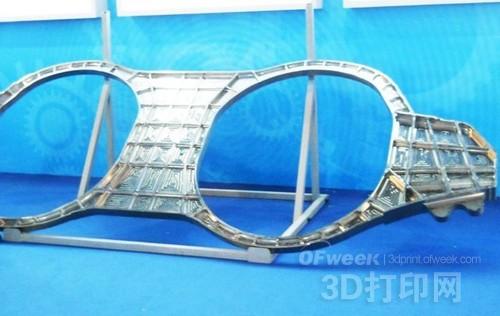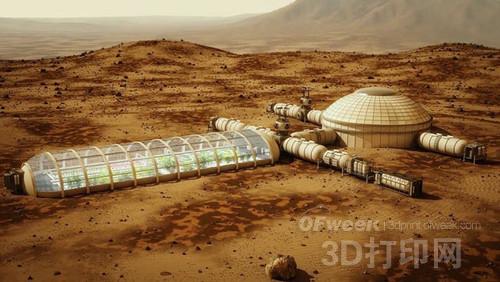On November 2, 2015, a day that was remembered by the history of Chinese aviation, the first prototype of the domestic large aircraft C919 was officially assembled and rolled off the assembly line! It marks the realization of China's "big plane" dream for many years!
"The development and manufacturing capacity of large passenger aircraft is an important indicator of the national aviation level and an important indicator of the overall strength of a country. Manufacturing large aircraft carries the aviation dreams of several generations of Chinese." - Xi Jinping "Large Airplane Dream" is China Inheriting the aviation dreams of several generations, the large aircraft is a concentrated expression of the technological level and industrial strength of a country, and its strategic significance is extraordinary! The official launch of the C919 large passenger aircraft has an epoch-making significance for the manufacture of China's large aircraft and even the high-end manufacturing industry. It officially announced to the world that China can independently produce large passenger aircraft.

Domestic large aircraft C919
A large aircraft has about 4 million parts and components. It is understood that some of the parts of the C919 large passenger aircraft that are off the assembly line are currently using 3D printing technology . Large aircraft is a systematic project involving a lot of technology and technology. Compared with traditional manufacturing technology, 3D printing technology is also a new attempt to enter the aviation industry. So, what kind of "predecessor and life" does 3D printing and this downline C919 have?
Large aircraft C919 central wing for 3D printing
According to the data of AVIC, since 2001, China has begun to focus on the development of laser 3D printing technology based on laser rapid prototyping technology of titanium alloy components. Among them, the model that successfully flew first from October to November 2012, widely used the main bearing part of titanium alloy manufactured by 3D printing technology, including the entire front landing gear.

China showcases domestic 3D printed titanium alloy fighter parts
On November 11, 2014, at the 10th China-Japan Air Show held in Zhuhai, Guangdong, an exhibit was highly regarded. At the time of the exhibition, the domestic metal 3D printing manufacturer Xi'an Platinum Laser Forming Technology Co., Ltd. brought a C919 passenger machine edge part. This part is very interesting because it uses 3D printing technology. .
The central wing of the C919 passenger aircraft is 3 meters long and is a large-scale titanium alloy component. The integration of 3D printing technology directly solves the manufacturing problem of the titanium alloy structural parts of the C919 aircraft, and therefore has epoch-making significance. At the same time, the application of this technology also marks that China has formed a new technology with independent intellectual property rights in the manufacture of large aircraft.

Schematic diagram of additive manufacturing principle
The parts required for traditional aerospace equipment often require single-piece customization. The application of additive manufacturing technology (ie, 3D printing technology) calls for the key technical aspects of the long-term development cycle of traditional mold manufacturing, and the traditional technology is producing zero. There are many unnecessary losses in the process of components, and the additive manufacturing principle unique to 3D printing can make good use of raw materials, making the utilization rate of raw materials up to 90%.
Furthermore, parts with 3D printing technology, combined with appropriate heat treatment techniques, have higher stiffness and lower toughness. Another point is that in the event of component failure, 3D printing equipment can be produced directly in the local area, so that the production of parts is no longer limited by geographical conditions.
3D printing makes designers more free to do whatever they want
In general, aerospace components are complex in structure and high in manufacturing costs. Once defects or defects occur, they can only be replaced as a whole, which may result in losses of hundreds of thousands and millions of dollars. With 3D printing technology, the same material can be used to repair the defect, and the performance of the repaired parts will not be affected, saving time and money.
  
 
SLA stereo light curing molding process

SLA molding technology process
Up to now, the more mature 3D printing technologies are generally divided into four categories: including photocuring technology, laminated solid manufacturing technology, fused deposition modeling technology and laser sintering technology. The most advanced technology in the aviation field is laser forming technology for metal components. The technology uses alloy powder as a raw material, and is stacked layer by layer by laser melting, and the large-scale complex components are formed step by step from the digital model.
For example, the above-mentioned domestic large aircraft C919, based on this technology, to create some titanium alloy parts, mainly used for aircraft main windshield window frame, wing, body joints. 3D printing technology brings to the industry a revolutionary structural design. With this technology, designers are no longer limited by the technical capabilities of the traditional foundry industry, and can express design thinking. By using 3D printing technology in the industrial design field, the cost of the enterprise can be greatly reduced.
3D printing makes "colonial Mars" not a dream
The development of everything has two sides. If you say the benefits of so many 3D printing, is there no defect? the answer is negative! 3D printing also has its inherent weaknesses and defects. For example, due to strength and quality issues, it is difficult to use 3D printing for key core components of the aircraft. In addition, the drawbacks of 3D printing are that the shape of the product is not fine enough, and there is a problem in the internal strength anti-fatigue property.

The picture shows the first electric vehicle Strati made by LocalMotors using 3D printing technology. The surface is very rough.
Professor Wang Huaming, the leader of China's laser additive manufacturing industry and the first prize of the National Technology Invention Award, once said that the commercial 3D printing promoted in the media is only the simplest non-metallic model printing in the technology, and does not represent the technology. The direction of development. The higher application of 3D printing is in the production of high-performance metal components in the defense industry. It is mainly used in entertainment in the home, such as printing personal models, toys, etc. As for other aspects, it has little effect. In addition, because the printing accuracy is not high enough, even a simple product such as a human body plaster can not display a human facial expression. Other printed nylon clothes and shoes are also quite rough and not very comfortable to wear.

American scientists, with 3D printing, can help humans "colonize" Mars
Summary: 3D printing technology was originally developed in the 1980s and has been promoted and applied in the commercial field since 2010. Although the current application process has not been popularized for some reasons, the future development prospects are very bright. At present, 3D printing technology is used more and more frequently in the design, manufacture and maintenance of aircraft. Not only in China, but also the major developed countries in the world are investing more and more in 3D printing technology. For example, NASA is trying to use 3D. Printing technology makes engine parts for spacecraft, and even some experts are eager to help people achieve the desire to "colonize" Mars with 3D printing.
We are professional manufacturer, which is established in 2005 and focus on export business to world wide.
We specialized in producing various kinds of tissue products, including Paper Hand Towel, Hand towel roll, Toiet tissue roll, Facial tissue, Box Tissue and Paper napkins etc.
We provide customized service for Hand towel roll products.
We supply different kinds of materials, like Virgin wood pulp, Recycled Pulp, Bamboo Pulp (Tree free).
The Material that we used are 100% biodegradable and compostable, Chlorine free and reach European food contact grade standard.
Tork Towels,Tenugui Towel,Tork Roll Towel,Hand Towel Roll
Bobo Tissue Product Manufacturer , https://www.bobotissues.com